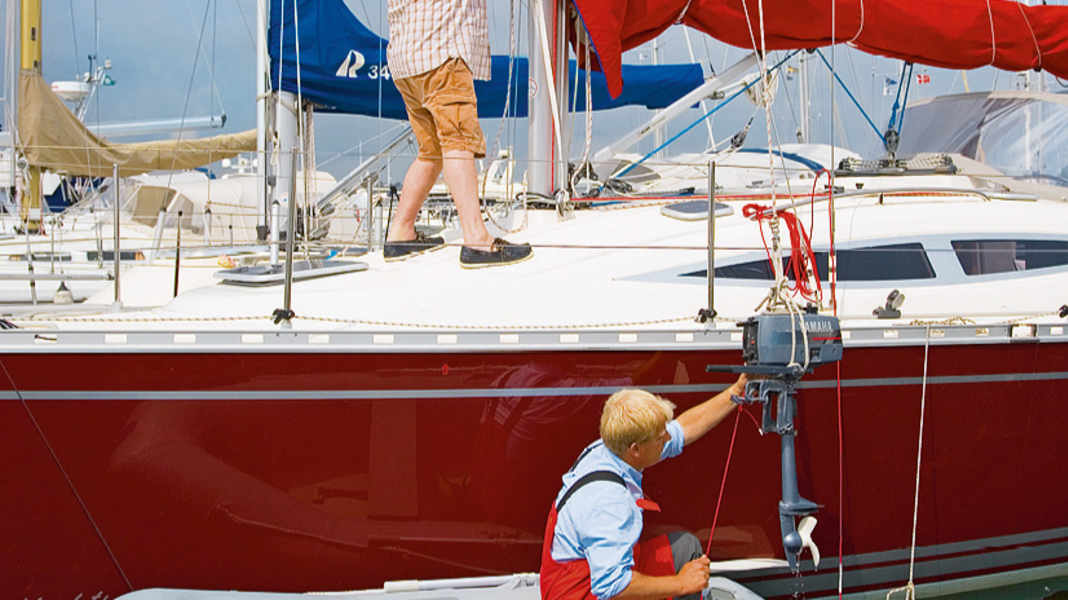
Crane Lifehack 1: General cargo loading

We have two folding bikes with electric drive on board for longer trips ashore or the journey to the supermarket further away. As convenient as the motorised assistance is on the bike tour, loading the bikes afterwards is a real pain. In addition to the frame, the drive and battery weigh quite a bit. It is not possible to hold the bike securely with one hand when stepping on board, and transferring it from the jetty to the deck also seems too dangerous to us. We have therefore devised a procedure for hoisting the bikes safely on board. First, the main bulkhead buoy is cut off and attached to the spinnaker. This is lowered until the buoy reaches the jetty. Now the wheel is shackled to the handle of the bag. One pull on the sheet is enough and it floats above the jetty. As it will swing towards the mast of its own accord, the movement on the sheet only needs to be adjusted gently. Once it is level with the mast, just ease it a little further and it will be safely on deck. Done. Klaus Deutschmann, Greifswald
Klaus Deutschmann, Greifswald
Crane Lifehack 2: Outboard motor with recovery belt

As soon as the outboard motor for the dinghy produces more than the usual 2 to 3 hp on the propeller, the transport over the stern down into the dinghy becomes a feat of strength. In addition, the larger the engine, the more difficult it becomes to handle. Although the accessories trade offers special carrying straps for this purpose, a halter-like line attached to the engine is also sufficient. It is even easier if you attach the snap hooks of the lifebelt to the front and rear of the motor.
Achim Weckler, Hattersheim
Crane Lifehack 3:Jockel on the ladder crane

In winter storage, the rear is higher. To remove the engine, we use a three-part aluminium household ladder. It can be assembled into a trestle with a sliding extension. The ladder is rigged and braced behind the boat. We use the six-fold buoy available for laying and setting the mast as a hoist. It is attached to the ladder crane at the appropriate height and fastened to the carrying handle of the outboard motor. The doldrums slide can now be easily lifted out of the shaft and lowered from the boat. Depending on the installation situation, the jib may need to be guided by a second person.
Thomas Becker, by e-mail
Crane Lifehack 4:Hook for the whisk

We have constructed a crane with simple on-board equipment that makes contortions a thing of the past. The centrepiece is a 50-centimetre-long aluminium tube that was left over from the construction of our sprayhood. It forms the crane arm, which is attached to the solid support of our equipment carrier for solar cells at the rear. Two pipe clamps form the movable connection. With two ends of cordage, blocks and further hose clamps, it becomes a real small crane for the outboard motor.
Werner Schwenzfeier, by e-mail
Do you have any advice for other sailors?
We will honour the publication of your lifehack with50 EURO.Please add photos or sketches. We also need your address and bank details
Submissions to: Editorial office YACHT, Quartier O, Paul-Dessau-Straße 8, 22761 Hamburg; or: mail@yacht.de
